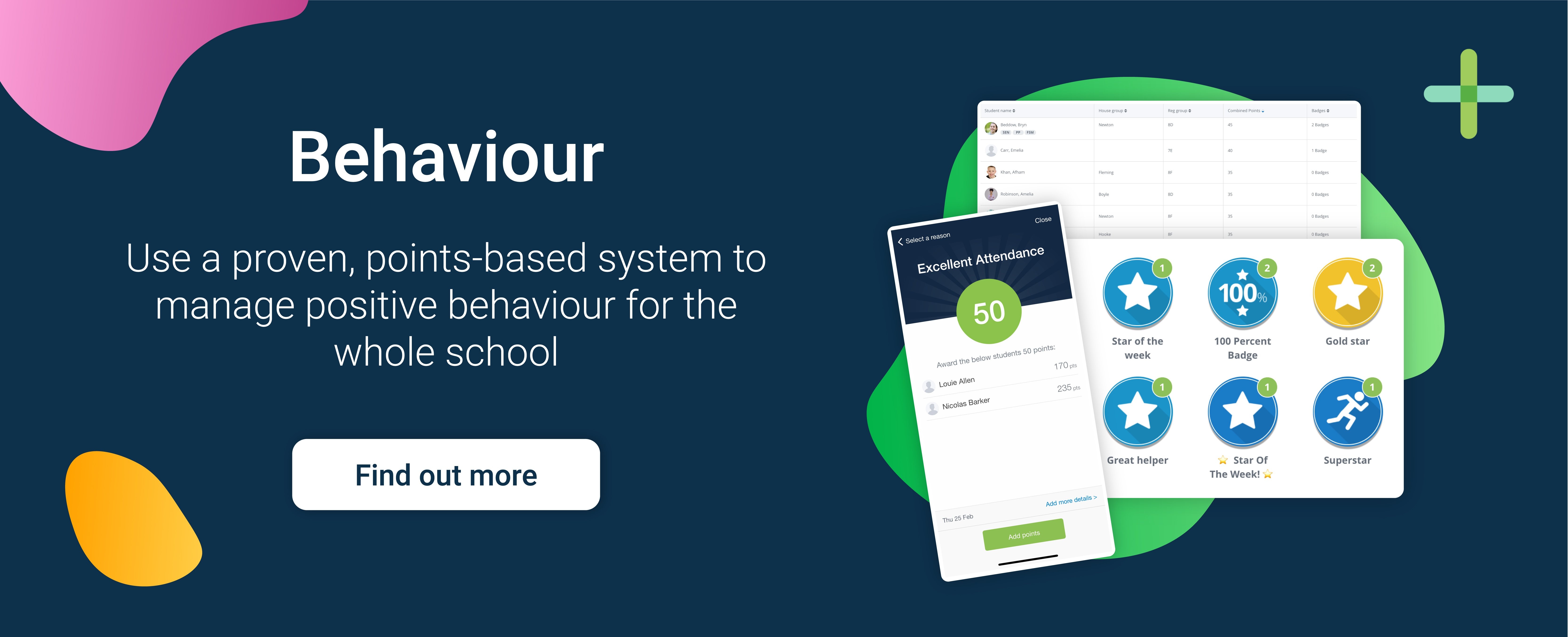Author: Bethany Spencer
Posted: 17 Mar 2017
Estimated time to read: 4 mins
Praise makes us feel good. Fact. Receiving praise releases dopamine - the neurotransmitter that drives our brain’s reward system. Dopamine releases feelings of enjoyment and reinforcement which motivates us to complete and continue doing certain tasks. This is why praise is such an important tool for us to give both our staff and our students, but also for us to receive.
Students:
For students, praise encourages them to work harder and is a key tool in accelerating motivation which links to both behavioural and academic improvements, it's also a great tool to exploit for good classroom management. Although this being said, when we give praise to students it does need to be effective in order to see the desired results that encourage them. Brophy and Burnett found that effective teacher praises consisted of two elements. The first being ‘a description of a noteworthy academic performance or general behaviour’ and the second ‘a signal of teacher approval’.
The first applies to being specific with the praise we are giving. Not just acknowledging when our students have performed well but giving them a clear indication as to why they have, giving more focus to the processes they took to get there. We must also be wary of simply telling students they are good at something, as this can have the opposite effect of motivating students and they can instead become complacent and less likely to take on new challenges as there is no reinforcement as to the ‘why’ they are doing well.
For example, if we were to tell a student ‘Well done! It’s obvious you’re a great English student’ they don’t know why, whereas if we were to praise the route they took to they know exactly what they did right and steps to take them to the next level they more likely they are to apply themselves.
It’s also important that we don’t just praise good results but recognise the effort students are putting into the work they are completing. This way they see a link between the amount of effort they put it, which will ultimately reflect in their grade, as well as result in praise from teachers, and encourage them to continue applying themselves. This kind of praise reinforces the idea of ‘teacher approval’ - the recognition students need so that they know the work they’re doing is appreciated and that they are doing well, within their capabilities.

Staff:
The release of dopamine not only makes us feel good and motivated, it can also have positive effects on innovative thinking and problem solving which will, in turn, have a positive impact on your staff’s work. Yet, with the same kick you may get out of eating a certain food or completing exercise, the effects are relatively short-lived.
In order to keep this behaviour up, we need to be giving praise regularly in order to see longer term results. As well as this, it’s been found that employees who receive regular praise are not only more productive but more likely to stay with their employer.
As a member of SLT, it’s important to remember that as much as you encourage staff to give your students praise you must also be giving them the recognition they deserve in order to keep them motivated and their morale high. The same applies as it does with students, be specific in the feedback you’re giving them and recognise the effort and time they’re putting into their job so that they feel valued.
In addition to this, you also have the ability to lead by example and impart your knowledge with them through the sharing of best practice. CPD doesn’t have to take place in the form of a conference room or training session, it can simply be by sharing your lesson plans and homework tasks and encouraging the sharing of best practice. Also, feedback doesn’t always have to be given directly to your team as well, it can be in the form of you feeding back to someone higher up and them then cascading the praise to your team member.
The action of giving praise may seem simple, but there is a lot of effort that goes into it, such as knowing how and when to give it but also who to give it to. It’s easy to continually give praise to the same people that are consistently performing well and forget about those who aren’t top of the class but need the recognition to motivate them. Equally, it’s just as easy to assume those performing well don’t need the additional recognition and efforts should be focused on those who are struggling.
The giving of praise can also be seen as a team effort, whether it’s teachers telling one another when a student has performed well so their efforts don’t go unnoticed, or SLT feeding back to one another on individuals in their team. Ultimately, if we openly give praise others will lead by example and you’ll start to see the impact school-wide.
Setting yourself goals of who to give praise to and how to give it can help to even out the distribution of this so that everyone in your class/team feels valued. We understand the importance of praise for all, which is why our Kudos app allows this to be done easily from the front of the class.
Custom badges mean that you can decide what to praise students on - whether that be the process, grade or effort gone into a piece of work, and the leadership board ensures that no student is forgotten about. Similarly, our Reports function allows SLT to run reports on the amount of homework teachers are setting and the results students are achieving so you can identify who, for both staff and students, needs praise or encouragement.


